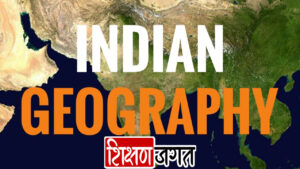Indian Geography Book Gujarati Geography is an important topic for UPSC, GPSC, Talati, Police Constable, Bin Sachivalay Clerk, TET, TAT Preliminary as well as Main Exam. The discipline of Geography is broadly divided into Physical Geography and Human Geography. The concepts of Geography need to be applied to questions related to Indian Geography as well as World Geography.
આ પણ જુવો : ગુજરાતની ભૂગોળ 1680 હેતુલક્ષી પ્રશ્નો PDF
Indian Geography can be divided into three – Physical Geography, Economic Geography and Social Geography. The major sub-topics under Physical Indian Geography are Physio-graphic divisions, Drainage, Climate, Vegetation, Natural Resources etc. Topics related to environment like Wild-life, Soil, Flora etc should be given stress too. Economic and Social Geography related aspects of Indian Geography should be studied in parallel to Physical Geography. Tip: NCERT Books will turn really handy for preparation of Economic and Social Geography.
આ પણ જુવો : ગણિત અને રિઝનીંગની 6 બેસ્ટ PDF
Indian Geography Book Gujarati
Indian Geography is a key subject for various competitive examinations. Geography as a subject is dynamic and diverse and its relevance cannot be ignored for many competitive exams like UPSC, SSC-CGL, etc.

The geography syllabus also overlaps with other subjects of Science which cover various dimensions of Geographical concepts. Considering the importance of the subject we have created a comprehensive study material on Indian Geography with five major sections like General Geography & Physical Features, Climate, Soil & Vegetation, Drainage System, Economic Geography, Human Geography. Let us have a look!
India is situated entirely on the Indian Plate, a major tectonic plate that was formed when it split off from the ancient continent Gondwanaland (ancient landmass, consisting of the southern part of the supercontinent of Pangea). The Indo-Australian plate is subdivided into the Indian and Australian plates. About 90 million years ago, during the late Cretaceous Period, the Indian Plate began moving north at about 15 cm/year (6 in/yr). About 50 to 55 million years ago, in the Eocene Epoch of the Cenozoic Era, the plate collided with Asia after covering a distance of 2,000 to 3,000 km (1,243 to 1,864 mi), having moved faster than any other known plate.
Indian Geography Book Gujarati PDF
In 2007, German geologists determined that the Indian Plate was able to move so quickly because it is only half as thick as the other plates which formerly constituted Gondwanaland. The collision with the Eurasian Plate along the modern border between India and Nepal formed the orogenic belt that created the Tibetan Plateau and the Himalayas. As of 2009, the Indian Plate is moving northeast at 5 cm/yr (2 in/yr), while the Eurasian Plate is moving north at only 2 cm/yr (0.8 in/yr). India is thus referred to as the “fastest continent”. This is causing the Eurasian Plate to deform, and the Indian Plate to compress at a rate of 4 cm/yr (1.6 in/yr).
An arc of mountains consisting of the Himalayas, Hindu Kush, and Patkai ranges define the northern frontiers of the South Asia. These were formed by the ongoing tectonic plates collision of the Indian and Eurasian plates. The mountains in these ranges include some of the world’s tallest mountains which act as a colourful barrier to cold polar winds. They also facilitate the monsoon winds which in turn influence the climate in India.
Rivers originating in these mountains flow through the fertile Indo–Gangetic plains. These mountains are recognised by biogeographers as the boundary between two of the Earth’s great biogeographic realms: the temperate Palearctic realm that covers most of Eurasia, and the tropical and subtropical Indomalayan realm which includes the South Asia, Southeast Asia and Indonesia.
Indian Geography Book Gujarati
The Indo-Gangetic belt is the world’s most extensive expanse of uninterrupted alluvium formed by the deposition of silt by the numerous rivers. The plains are flat making it conducive for irrigation through canals. The area is also rich in ground water sources. The plains are one of the world’s most intensely farmed areas. The main crops grown are rice and wheat, which are grown in rotation. Other important crops grown in the region include maize, sugarcane and cotton. The Indo-Gangetic plains rank among the world’s most densely populated areas.
ભારતની ભૂગોળ બૂક PDF ડાઉનલોડ કરો અહીંથી


1 thought on “Indian Geography Book Gujarati | Download Most Useful PDF Free”